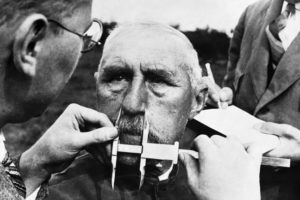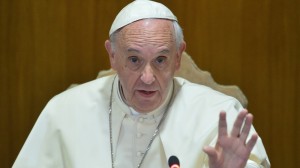A civil war survivor has found a new lease of life after pioneering a series of innovative designs which could dramatically change the outlook of amputees all over the globe.
David Sengeh, 26, is a Harvard and MIT Media lab graduate student from Sierre Leone, who has come up with a technology that could change the whole field of bionics, and improve the lives of amputees the world over.
He was one of the lucky ones during the civil war which engulfed his country, who managed to escape with his parents and four siblings as gangs of soldiers roamed the country committing murder, rape and mayhem. But although he and his immediate family managed to get away from the bloodbath, his uncles and neighbours were not so lucky.
He said: “Anybody who lived in Sierra Leone got affected by the war.”
Amputations were one of the particularly brutal methods that was used to terrorise the population and force them into submission.
As a result, tens of thousands of men and women had their arms and legs amputated and many of them still continue to face discrimination and stigma from family and friends, today.
This has left amputees unable to work and in some cases, separated from their families.
Of the ones lucky enough to be given a free prosthetic limb, most of them suffered considerable discomfort from the sockets of their prosthetic limbs.
But thanks to a revolutionary new method by Sengeh, those issues may soon be a thing of the past.
He told CNN reporters: “It doesn’t matter if somebody gives you a pair of shoes that are worth $200 dollars – if they are two sizes too small for you, you will not wear it; you will rather walk bare feet. “This is the same thing – the prostheses were absolutely uncomfortable for them and it doesn’t matter whether it was free or not, they would not wear it.”
Sengeh said that he hopes the sockets will be available on the market within the next five years.
As a doctorate student in the Biomechatronics Group, which looks at how technology can be used to enhance human physical capability, Sengeh has embarked upon a project which aims to design the perfect fit for every prosthetic socket – the interface between the body and the prosthetic limb, where a lot of amputees experience discomfort.
What he did, was he found a way to load MRI scans of a patient’s limbs onto a multilayer 3D computer to customize the socket design.
This variable-resistance socket, uses computer-generated designs and manufacturing to produce a multilayer 3D printed socket made of materials with different degrees of stiffness, customized using an MRI of the patient’s residual limb.
He said: “I think it will change the whole industry. You just send us a minimum set of data and we will ship you a comfortable prosthetic socket.”
Despite being caught in the grips and horrors of war, Sengeh was always gifted. As a child he got one of the highest scores for a standardized test in Sierra Leone and in 2004 he won a scholarship to study in Norway.
After that he earned a place studying in Harvard to study at its School of Engineering and Applied Sciences, before joining MIT’s Media Lab.
Not only could his innovations make life more comfortable for amputees in Sierra Leone, it could also alleviate discomfort for sufferers worldwide.
But the prosthetic limbs is not the only project that Sengeh has kickstarted to make improvements to his country.
Another project he created was one called Innovate Salone, where he encouraged young people from Sierra Leone to develop their own creative projects. In just over a month, the project attracted 300 students who worked on 72 different projects relating to health, agriculture, household chores, crafts and entertainment.
A team of local and international judges selected eight finalists, each of whom received $500 to continue the development of their projects. Winning projects included an electric broom, a project for dyeing fabrics and an aquaculture pond to provide fresh fish.
Another project included a homemade FM transmitter to provide neighborhood news and entertainment, made by 15 year old Kelvin Doe.
Impressed with Doe’s innovations, Sengeh arranged for him to go on a trip to the United States in which Doe was a featured speaker at the World Maker Faire in New York. He also spent time as a resident practitioner at the MIT Media Lab, and even met with Harvard University President Drew Faust, according to a report by the Massachusetts Institute of Technology.
A youtube video about Doe’s trip went viral and attracted over three million hits. Donations flowed in as a result and Doe was offered several scholarships from US schools.
It also inspired similar initiatives in places as far afield as Brazil, Colombia, Botswana and Vietnam.
Another NGO Sengeh created was one called Global Minimum, a group which encouraged African people to solve their own problems, starting with malaria in Sierra Leone, but reaching across the whole of Africa.
Sengeh told CNN reporters: “We do have the talent and young people within Sierra Leone, within Africa as a whole, to invent the future. We do not need primary aid, we do not need money, we do not need solutions and products to come from the West to be given to people and train them how to use it.
“That is not how you develop an economy – the creative thinking, the ability to dare to dream and take the risk to develop a prototype. Those are what’s instrumental. Those are what’s needed to develop products that will change the world. That is what changes a country.”
Akashic Times is the UK’s only online, fully independent not-for-profit weekly newspaper that brings you real news from across the globe.
If you want to keep ahead of what is really going on in the world, subscribe to our newspaper via the subscribe button and join our Facebook & Twitter pages. Subscription is completely free ofcourse















Follow Us!